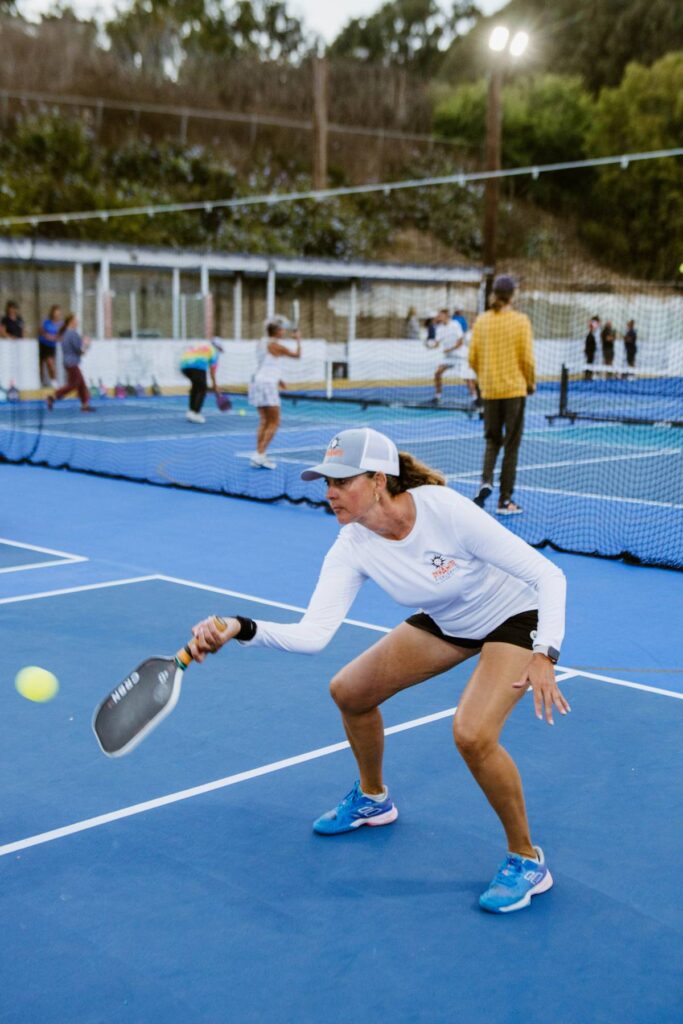
Dynamite’s 5 Guidelines of Transition
At Dynamite Pickleball, we know how crucial it is to master the transition zone in pickleball. As competitive players, we’ve put in the extra work to develop skills in this challenging area. The transition zone—also known as “no man’s land” in tennis—is the middle section of the court between the baseline and the NVZ (Non-Volley Zone) line. Unlike tennis, we can’t simply bypass it; we have to move through it.
In pickleball, the goal is to reach the NVZ line where we can control the game. After serving, we’re positioned back at the baseline and need to work our way forward strategically. To help you succeed, we’ve created our 5 Rules of Transition to guide you through mastering this key area of the court.
Rule #1 Don’t Chase Junk
As the serving team, you’ll serve, receive the ball back, and let it bounce before returning it. Usually, you’ll be positioned near the baseline for this 3rd shot, often considered the most crucial shot in the game. The 3rd shot can be a drop (landing softly in the opponent’s kitchen), a drive, or a lob.
If your 3rd shot is too high and easy for your opponents to attack, both you and your partner should stay back. We often see players hit a high 3rd shot and still rush toward the NVZ, only to get countered. Remember, if you hit a “junk” 3rd shot, it’s better to hold your ground at the baseline.
Rule #2 Don’t Marvel
When you and your partner hit a solid third shot, take a step or two forward. You don’t have to move all the way up, but closing the gap a bit can make all the difference.
Rule #3 Don’t run a red light
After hitting a solid third shot and beginning to move forward, make sure to stop before your next shot. Keep your body low, steady, and your paddle out in front. See the photo above for reference—this shows me in proper form, paused and ready to hit a shot in transition.
Rule #4 Don’t Pop up
After hitting a strong third shot and moving in slightly, remember to stay low as you hit the next shot. Often, we rush to hit and move forward, causing us to stand up too early. Focus on staying down and steady through the shot.
Rule #5 Learn when to drop or fire in transition
As pickleball speeds up with more powerful paddles, our old rule of dropping every shot in transition has evolved. Now, we can selectively attack appropriate shots while moving forward. Learning both skills—dropping and attacking—is essential. Start by mastering drop shots into your opponent’s kitchen to gain time and space to move up. Once confident, add selective attacking into your game. Here are situations where attacking is ideal:
- Targeting opponents who struggle with fast-paced shots
- Volleying balls out of the air or those above knee height
- Capitalizing on chaos on the other side of the net
- Attacking slower, “dead” balls that bounce easily

